10 Reasons Why You Should Try Wildlife Photography
![]()
I have had many hobbies in my life, but nothing comes close to my love for wildlife photography.
Over the years, I have made many wildlife photographer friends. Interestingly, many of them were competitive in one or more hobbies, or were doing well in their professions before taking up wildlife photography. Some were successful commercial photographers, wedding photographers, graphic designers, bass fishing champions, hunters, birders, engineers, world-class professors and researchers, while others were retired medical doctors, entrepreneurs, and even lawyers. With their talents and connections, these people could have chosen any fancy hobby they wanted. But once they tried wildlife photography, they never looked back.
![]()
#1. We Are Still Cavemen
A lot of research has shown that, although we live in houses or buildings in the city, we are still cavemen at heart. The basic wiring in our brains and how we interact are the same as thousands of years ago. Nature is where we still belong. That’s why we all enjoy a walk in the woods, gazing at the stars, watching a sunset, being on a beach, or going camping.
On October 15, 2013, I went to the Alaskan Arctic for 10 days hoping to see polar bears and the northern lights. After 9 nights with cloudy skies, I was excited when the weather forecast for the 10th night was clear and the aurora activity predictor high. My good friend Carl and I set up our cameras at the edge of a frozen river and waited for hours in subzero temperatures. At 2am, we saw a faint green light forming a bridge in the sky, stretching from left to right. We looked at each other.
“Is that it?” I asked as I squinted my eyes, trying to see more clearly through the dim light. Right as I finished asking, the northern lights came to life. The dim green light turned into a bright firework, as if someone above was using a giant paintbrush to paint the sky. After each stroke, the paint would drip down sparkles of green and red. It was so bright that the whole river was lit up. I was amazed by the creativity of this dynamic painting in the sky, and actually started to scream. Both Carl and I were jumping and dancing, completely in awe of nature’s spectacular light show.
The activity died down after half an hour, and that was when we realized that we’d screwed up all of our camera settings and compositions because we were too excited! I believe anybody would have felt the same if they were there with us that night, witnessing that incredible moment.
We used to come face-to-face with nature all the time—rivers, wild oceans, phenomena like the northern lights, and of course wild animals. In fact, we used to hunt them for survival! Today, wildlife photography is the best way to “hunt” animals, because we are only shooting with our cameras. I believe that this truly is our highest calling.
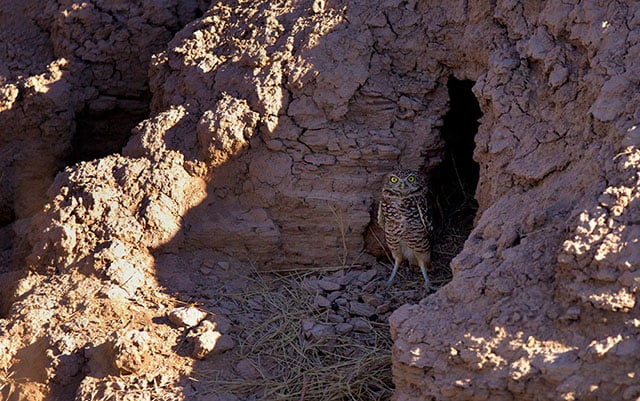
We are still cavemen at heart, just like this wild burrowing owl. Look at how nicely he decorated his driveway. How did he manage to move those rocks? Taken in the Inland Empire, California.
#2. The Power of Nature is in Your Hands
Wildlife photography is about capturing a split second, when the light and the animal behavior come together to create an emotional image. It sounds easy, but…
The beauty and also the curse of wildlife photography is that one cannot change almighty Nature. One cannot change the weather and the light, where the wild animals want to go, what they want to do, and when special things happen to them. We can’t get pictures if we are too far from the animals, but if we get closer, they may get away—or even worse, they may attack you. Nothing is working in our favor!
Actually, wildlife photographers don’t want to change any of this. We want to reduce our footprint as much as possible, and we want to earn our images through practice and perseverance. Wildlife photographers are powerless in the face of nature. The weather (lightning, freezing cold, etc.) can kill us. The animals (bears, lions, tigers, moose, snakes, bees, mosquitoes, you name it) can kill us too.
Moreover, most animals have developed camouflage in their fur/coats that blends in the environment perfectly, helping them to survive. And we have to use our naked eyes (or occasionally binoculars) to find them. In a way, we are competing with nature and evolution itself. If you have ever photographed an owl or a bobcat, you understand how difficult it is to track them. My friend once told me that even though he was told an owl was on a particular tree, it still took him three hours of combing the tree leaf by leaf before he finally find the owl perched comfortably on a branch.
Yet it is this very uncertainty, helplessness and powerlessness that makes wildlife photography so enticing and breathtaking.
![]()
Instead of trying to control the animals, we let them be. We make the best of the conditions, learn the animals’ behaviors, come to understand their lives, and study the geography and weather conditions. We put ourselves in the spot with the best possible foreground, background and optimal amount of habitat we want to be included in our frame, at the best possible time of day, during the best time of the year (based on the animal’s life cycle), after pre-visualizing the situation and applying the knowledge gained through days, weeks, months and even years of practice. And then we wait quietly and patiently, in the water, in the mud, in the snow, with a heart full of faith, for this special moment when everything comes together—when the wild animal shows up, in the light and setting we envisioned. And once in awhile, nature gives us our reward.
When that moment comes, we know we have conquered nature. Maybe this is what some people mean when they say “becoming one with Nature.” Wildlife photography is Zen.
In this information age, we are overwhelmed with data. Most of the things we see and encounter nowadays are artificial, fabricated, manipulated and dramatized with certain intentions we may or may not be aware of. Nature is really the only place left where we can have solitude and see the truth. Nature does not lie.
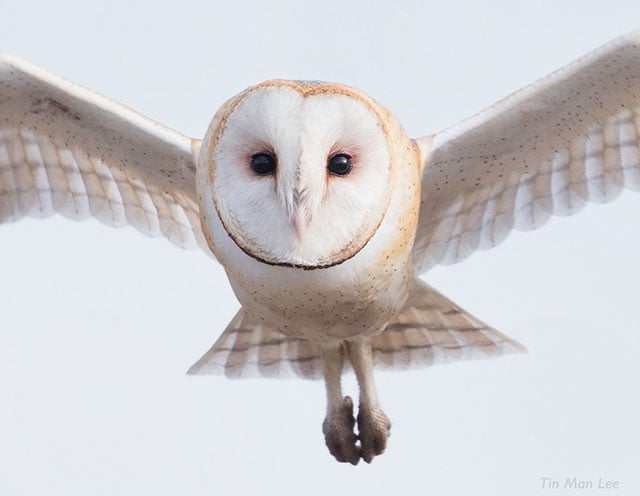
Once you have been face-to-face with an 800-pound, 9-foot-tall grizzly bear, on foot, with nothing between you and the bear—well, then you know how small you are. You simply don’t have a say in situations like that. It’s a humbling experience. It puts things in perspective. You could be wiped out in any second. Nobody could save you if the bear decide to attack. It’s an awakening to what our ancestors once faced.
The brown bear is a gentle giant. It does not kill humans for food. But once you have been there, watching them do their thing, with no concern for your presence, in the grand landscape of wilderness, it’s something you won’t forget. It’s raw fear and admiration.
Finally, after seven days of looking for them without success, I found myself in frigid glacier water, face-to-face with a huge coastal brown bear that was running in my direction, pouncing on salmon. The immense power of the bear and the eye contact it made with me froze me in shock. The force was so overwhelming that my legs were shaking involuntarily. I was so scared that my body couldn’t move, even though I knew the bear was just going for the salmon. After all, you can never be sure. It took all of my willpower to move my finger and press the shutter.
![]()
But not all experiences are about life and death — at least not for the photographer! I was in Yellowstone National Park when I witnessed a mother bison protecting her injured calf for three days, alone, in front of all manner of predators. The whole mountain echoed with wolf and coyote calls. It sent a chill down my spine. The experience I had with that bison and the image that I captured is a perfect example of the power and majesty that keeps me coming back to wildlife photography year after year.
![]()
“Exploring nature photographically is the most existential and essential activity you can do with a camera. In nature you deal with the basic questions of life and death, which is not something you can say about many other branches of photography.” – Pal Hermansen
#3. Living in the Moment
I always have the fantasy that wild animals can tell if we are a good people or not. I like to believe that if they sense your bad intention, they flee. It is a challenge to get close to them, but the experience allows me to focus completely on the present. I have to use all my senses to feel with animal, and must be alert at all times.
We encountered a bull moose in mating season while in the Alaskan Arctic. Bull moose in mating season kill more people each year than bears! Standing at 10 feet tall, they are aggressive and will charge at anyone intruding their space. Yet this bull moose allowed us to get close. He even took a nap next to us. In the following image, he had just woken up and walked away, giving us one last look. The twig on his antler shows how agitated and hormonal he was, to the extent that he had to use tree branches to scratch the itch!
Am I a good person then, Mr. Moose, that you would allow me to get so close?
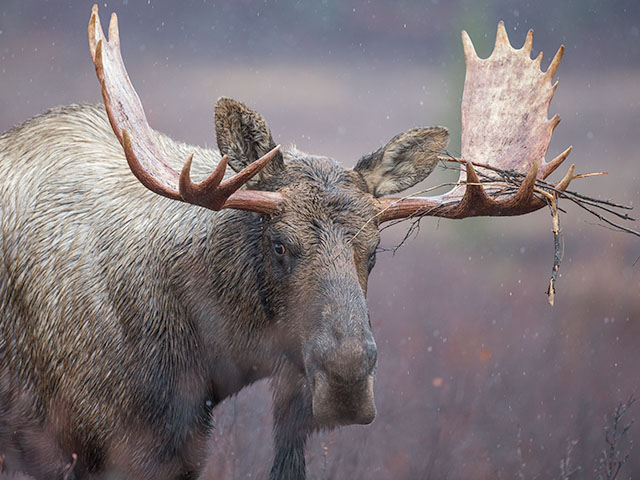
#4. Disappearing Wilderness, Endangered Species
I remember Moose Peterson once saying that it is the saddest thing to see an animal species go extinct—and a lot of the time it’s because of us humans. You have all heard about global warming, oil drilling, etc. Because of these factors, the habitats of wild animals are disappearing. Wildlife photography has allowed me to meet a lot of wild animals, many of which I didn’t even know existed. I read somewhere that polar bears will disappear in a few decades. Wildlife photography allows us to see them, memorialize them and bring awareness to conservation.
Hopefully we can find a way to preserve animals such as this polar bear family in the Alaskan Arctic. Who wouldn’t want them to continue living, healthy and happy?
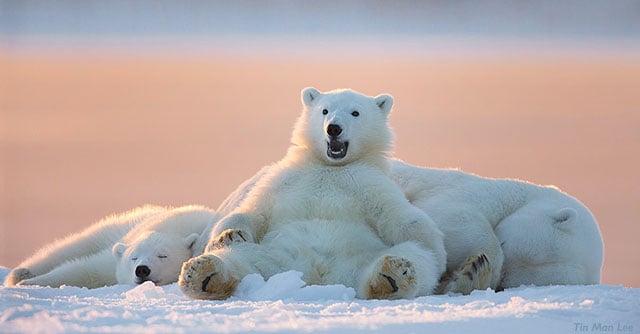
Through my quest for wild animals, I have set foot in many amazing places I would never have dreamed of. Yellowstone. Alaska. Eskimo Village. The snow covered mountains of the Grand Tetons. The dreamy Lake Blue Cypress. The northern lights at Brooks Range.
Yet one does not need to travel to these grand locations to see wildlife. If you look closer, you will see that it is all around us.
I encountered the endangered San Joaquin kit fox in a rare remaining grass field on a campus in Central California. The place had been the fox’s original habitat. These foxes were here before us, but we humans took their original habitat and turned it into a school. Yet somehow they have adapted and survived. They are nocturnal, so most people have never seen them in daylight. They quietly share the area place with humans, and are active only at night.
I was lucky enough to catch a glimpse of them on a rare occasion when they came out in daytime—after many hours of waiting near their den, and with the help of my good friends Brian (a biologist and professor of the endangered species program) and Hadi. We had been inspired by the beautiful photos of Moose Peterson. My goal was to take pictures of the foxes as naturally as I could, so that they would resemble what I imagined they looked like before their habitat was turned into an urban area. I hope these pictures make you love these beautiful wild animals as much as I do.
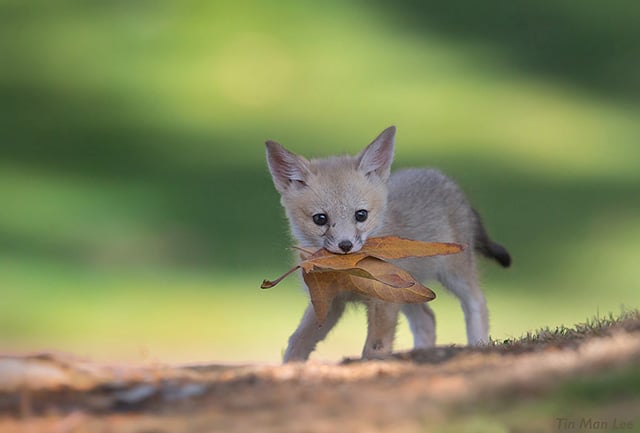
#5. Finding Beauty in Everything
Nature is not always sunshine and rainbows. Yet if you keep looking—enduring rain and wind—miracles can happen. When things are tough, there is always something beautiful to find. At that moment, you no longer care for a fancy car or an expensive watch. Instead, you are in awe of the fancy light of the nature, and the special moments when a magnificent wild animal allows you to be present in its world. The simple pleasures help you to appreciate and be grateful.
In “The Letters of Vincent Van Gogh,” Van Gogh told his brother:
“Do go on doing a lot of walking and keep up your love of nature, for that is the right way to understand art better and better. Painters understand nature and love her and teach us to see.”
This applies to photographers, too.
I realized that I had never truly used my eyes until I found these wild animals—all of which live within a three-hour drive of Los Angeles! Many of them thrive right next to freeways or buildings.
Imagine how much we have missed, neglecting to stop and share a moment with these beautiful species that share the same home we call planet earth.
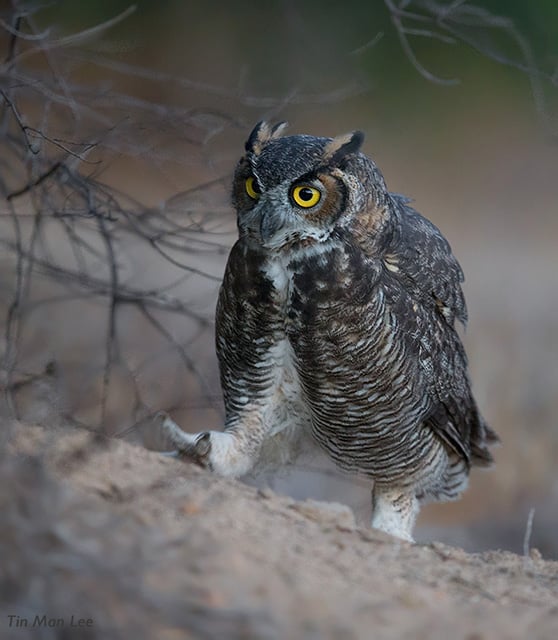
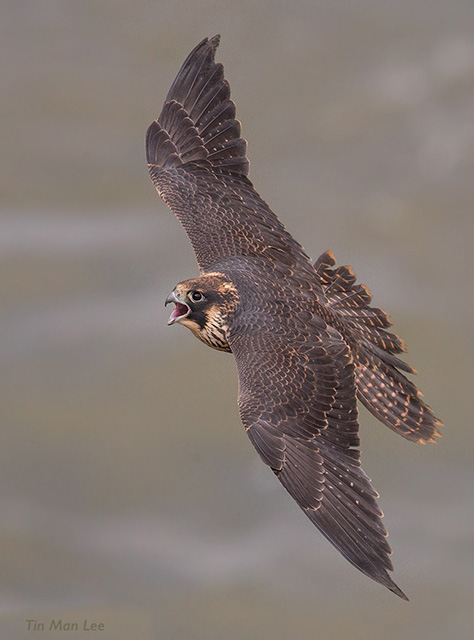
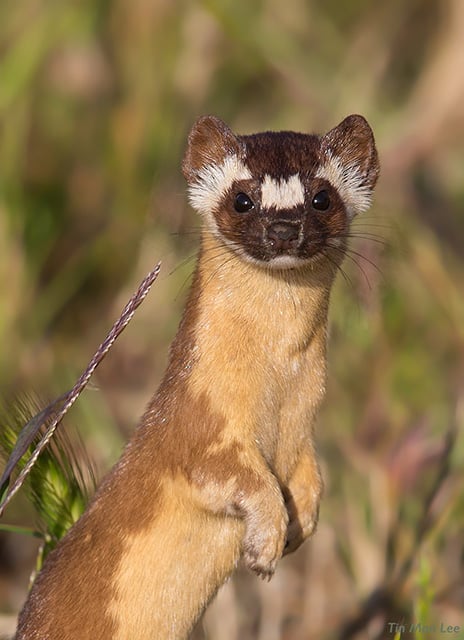
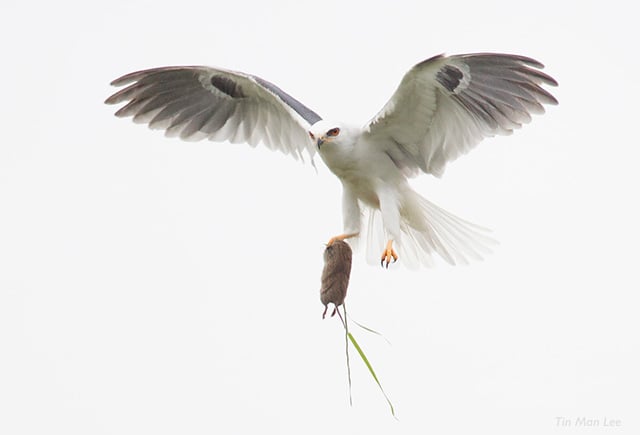
#6. It Means No Worries
When I am photographing, I am all in. And in addition to my camera, I usually carry a big dumb grin around with me, too. All worries, sadness and regrets are forgotten.
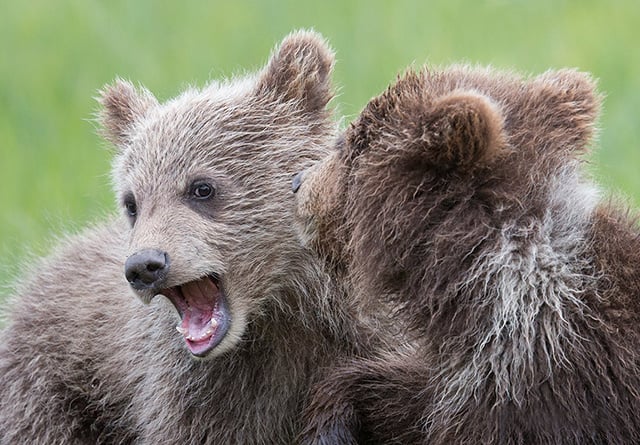
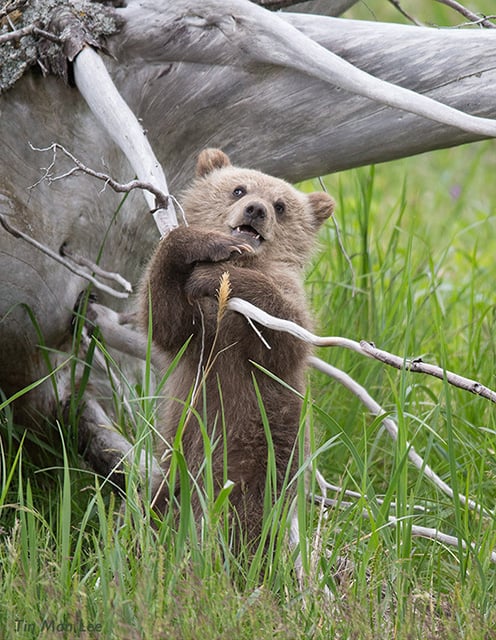
#7. Our Secrets, Revealed
Wildlife photography is one of the best ways to show the world who you are. Photographers often reveal themselves without realizing they are doing so. As Robert McKee put it: “True character is revealed in the choices a human being makes under pressure.”
The animal species you choose to photograph tells me if you like beauty, power, elegance, speed, excitement, etc.
The animal behaviors you like to photograph tell me what you are longing for in your life. For example, a desire to capture the life-and-death moment of a lion pouncing on a buffalo may mean that you are into power, or an adrenaline junkie. On the other hand, searching out mother and baby interactions may mean you are longing for love.
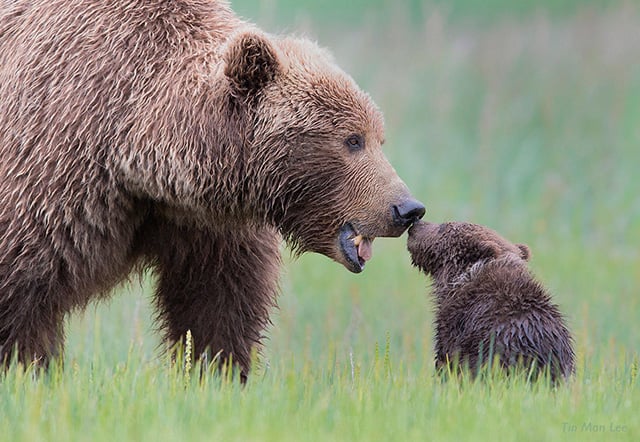
If you are always after the most elusive species, this tells me that you may be a dreamer. Or, if you love to capture interesting behavior, you may have encountered hardship in life, yet chosen not to take it seriously, and instead just decided to laugh!
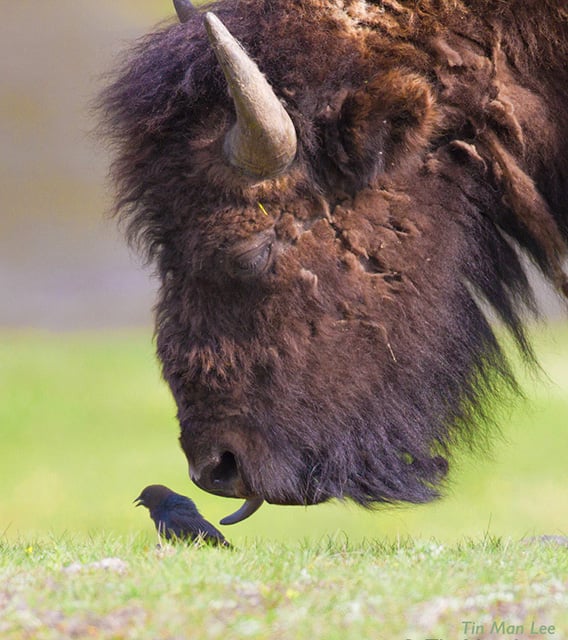
Whether photographers are obsessed with one particular species or have different species in their portfolio—or have almost ALL species represented, but all with the same pose and background—also tells me a lot about them.
Your mastery of exposure and image sharpness tells me how serious you are.
Your composition tells me if you like to abide by rules, or if you try to be different for difference’s sake.
The pursuit of perfect image quality (extreme sharpness and noiseless images with exaggerated colors, but without a good story) also tells me something about the photographer.
The choice to shoot from a comfortable distance, or a tendency to approach an animal to within a few inches to actively change their behavior to get a picture tells me something too.
Patiently waiting for natural behavior or using bait to get an incoming owl picture tells me if a photographer likes to take shortcuts. (Four years ago, when I was a beginner, I was blown away by the beauty of some of the snowy owl and great gray owl photos on Internet, with the birds flying towards the camera, talons out. I naively assumed that those pictures had been taken naturally, and dreamed that one day I would capture something like that. I was excited to join the photo workshops of these photographers. But after learning that these were all baited shots, I became disappointed with the photographers that I’d once truly admired, and lost all interest in their work. I didn’t even want to see their photos again, because I felt like my dream had been shattered.)
If you support game farm animal photography, this tells me you haven’t read this article by the great legend Tom Mangelsen. Well, I hope it’s because you haven’t read that article. Otherwise, I don’t know how you could support this practice!
How you isolate the animal in the frame and your selection of background tells me how you pay attention to details, and how much of a purist you are.
Whether or not you like birds in flight tells me how much you love freedom.
So, my friends, take a closer and deeper look at your photos and the photos of other photographers. Don’t just look at the images and think that they are beautiful. Look deeper, and really feel them. Look for clues. You may discover something about yourself or another photographer that you have never thought of before. That’s what makes wildlife photography so interesting. It’s like palm reading—but most of the time it’s more accurate!
#8. Failure is the Ultimate Test
On average, I take thousands of pictures on a trip, but usually only ending up keeping 10 or less. The failure rate is pretty high. And on many trips, I don’t even end up finding an animal. It’s really a matter of how many times you can get hit and still get up and keep going.
“The wonderful thing about nature photography is that you are continually humbled and amazed by the delightful surprises that come from it—and horrified and disappointed when it doesn’t work as you predicted.” – Jim Brandenberg.
But the failures only make the successes that much sweeter. After four years of waiting, I finally saw another bobcat.
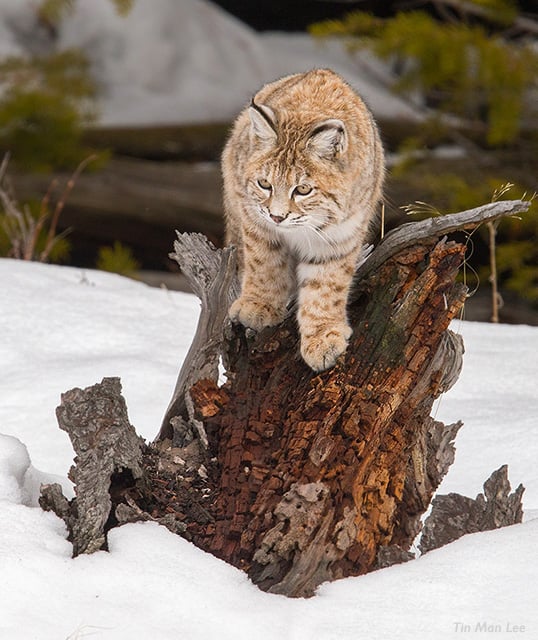
Though I mentioned earlier that nature is not always sunshine and rainbows, there are times when rainbows appear! After three days of non-stop rain, and sitting in a shuttle for 12 hours each day while driving past a dangerous cliff in Denali National Park, the rain stopped and I saw this elusive Dall’s sheep.
![]()
#9. Emotion
If I can capture a moment that evokes emotion in my viewers, I consider it a success.
![]()
![]()
![]()
#10. Sharing with Loved Ones
I have made some great lifelong friends along the way. We all share the same passion, and it’s an amazing experience to hear about their wildlife encounters. My good friends have shared information with me that has allowed me to photograph some species I never would have dreamed of.
The response I have had from sharing these pictures has been overwhelming and heart-warming. It’s such a great feeling to meet people who share your passion. I feel the best when people start telling their own stories about their wildlife encounters after seeing pictures of mine, or when they tell me they want to hop onto an airplane to go to the places I have shown them.
I was so touched when a lady from the Netherlands told me that her 8-year-old son had tears in his eyes when he came across my mountain goat jumping picture. Moments like that are the reason that I shoot photos.
I have not been able to see my grandma for the last few years. But Mom brings my photos to my grandma, and she finds great joy in viewing them. Mom said that grandma’s eyes were very good as she pointed out the water droplets on this puffin.
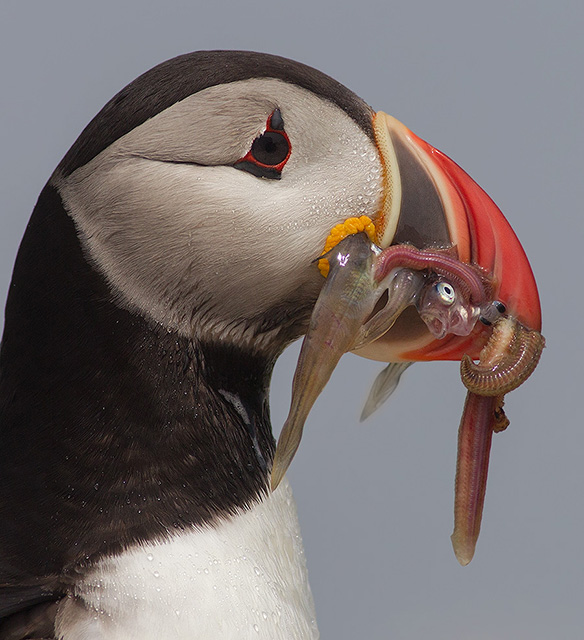
And when Mom showed grandma my bear picture, her first response was, “This is too dangerous. They run very fast. Tin Man cannot outrun them.”
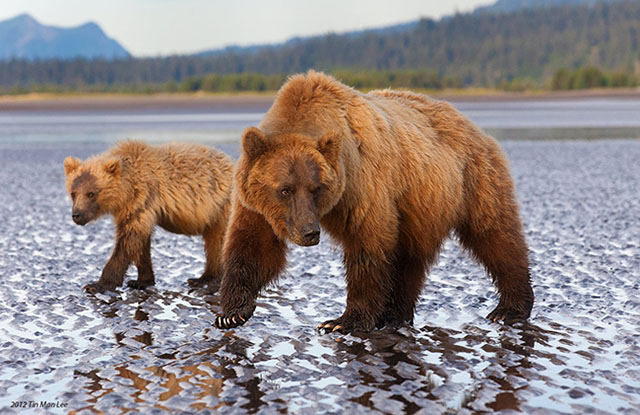
Mom was shocked, as she had no idea that grandma knew how fast a bear could run. It turned out that back when grandma was working, she had to constantly hike through the wilderness and mountains, and encountered wild bears—as well as a tiger at point blank range. She and her friends survived only because the tiger had consumed another human a few minutes earlier.
We wouldn’t know these special stories from my grandma’s life if she hadn’t seen my photos. And that is what photography is all about—sharing the encounters that have touched and affected us with the people that we love.
With so many animals and experiences out there waiting for us, it’s just a matter of grabbing your camera and heading into nature. I hope to see you out there!
About the author: Tin Man Lee is a wildlife photographer and the man behind the blog Tin Man Photography. He has a full-time job that’s unrelated to photography. After starting wildlife photography 6 years ago as a hobby, he found himself hooked, using every weekend and long holiday since going into the wilderness and photographing wild animals.
His photos have since won international awards and have been displayed at the Smithsonian National Museum of Natural History in Washington DC. He has also held solo exhibit in Hong Kong. You can see more of his work and writing on his website. This article was also published here.
Image credits: All photographs by Tin Man Lee and used with permission